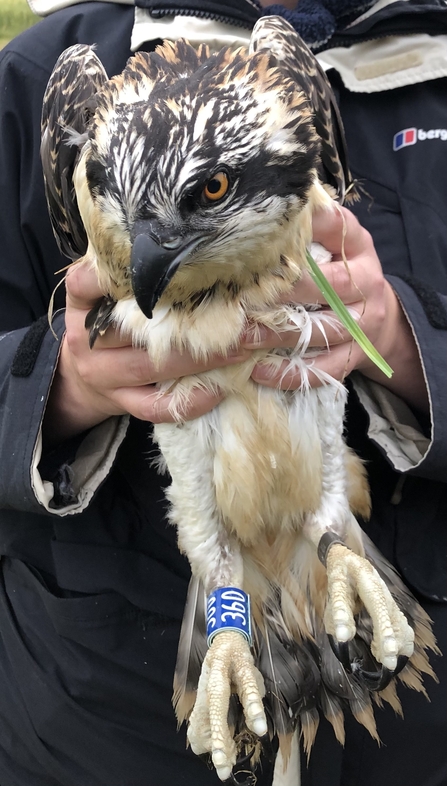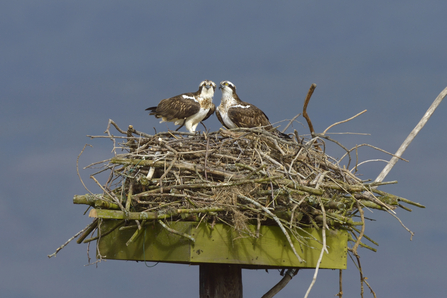Leicestershire & Rutland Wildlife Trust started the project 25 years ago because ospreys had become extinct in England and Wales. As a result of the project, ospreys have now spread across the two countries.
Ospreys are a huge fish-eating bird of prey with a wingspan of nearly 5 feet and can live for up to 20 years. The 200th chick, a female, fledged in July and was ringed with the number 360 to identify her.
Abi Mustard, Osprey Information Officer for the Leicestershire and Rutland Wildlife Trust, says:
“This year is an important and exciting year for the Rutland Osprey Project – we’re thrilled to be celebrating our 25th anniversary and also welcoming the 200th chick. It’s brilliant that we now have a self-sustaining population of ospreys in England.
“The success of the Rutland Osprey Project is not only due to the resilience of the birds themselves, but also to the hard work, support and dedication of everyone who has been involved – we have a wonderful team of volunteers, staff, local landowners and supporters who have helped facilitate these incredible achievements. We are all looking forward to seeing what the next 25 years brings.”
Leicestershire and Rutland Wildlife Trust launched the Rutland Osprey Project in 1996 in partnership with Anglian Water and the Roy Dennis Wildlife Foundation to reintroduce this magnificent bird of prey to the skies of England, where they had been extinct for over 150 years.
As well as establishing an osprey population in and around Rutland Water nature reserve, the project has helped the birds to breed in other parts of England and Wales.
Ospreys are now found breeding in Cumbria, Northumberland and North and West Wales, while Suffolk Wildlife Trust is working with the Rutland Osprey Project and Roy Dennis Foundation to bring breeding osprey back to East Anglia for the first time in over a century.


